
Tu-2S
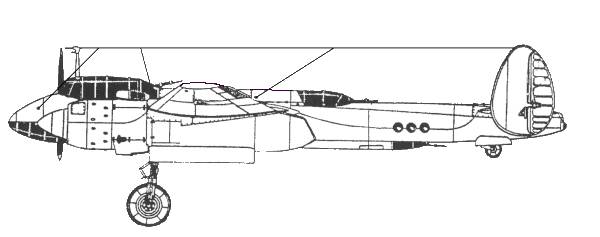
The Tupolev Tu-2 design criteria was to produce an aircraft with performance that would be better than the Ju 88. The prototype flew in January of 41 .Test was completed in April of 41 but the prototype aircraft was lost due to an engine fire. The second prototype was redesigned with a longer fuselage and numerous other changes, first flight was made in May of 41. Testing was completed by autumn with a strong recommendation made for series production. The German invasion led to further delays as did the decision to change engine types. The aircraft flew again in November of 41 with the new engines. The first production prototype, in which efforts were made to reduce the number of parts and the number of man hours required to build it, flew in December of 41. The first series example flew in March of 42 with testing completed in October by which time the aircraft was already in production. The definitive production version was the Tu-2S which incorporated yet more changes. It was aerodynamically outstanding with flush riveting on all external surfaces and was capable of speeds higher than those of any Soviet fighter service at the time of its introduction. Powered by two ASh- 82 F engines it had a max speed of 300 mph at sea level and 340 mph at 18,000 feet. Service ceiling was 31,170 ft and a range of 1,300 miles. A total of 2,547 Tu-2S were built before it was retired. After the war the Tu-2S served in the Air Forces of Russia, China, North Korea, Bulgaria, Hungry, Romania, Poland and Indonesia. In Russia the Tu-2S was replaced by the Iiyushin Il-28 jet bomber.
The Kit
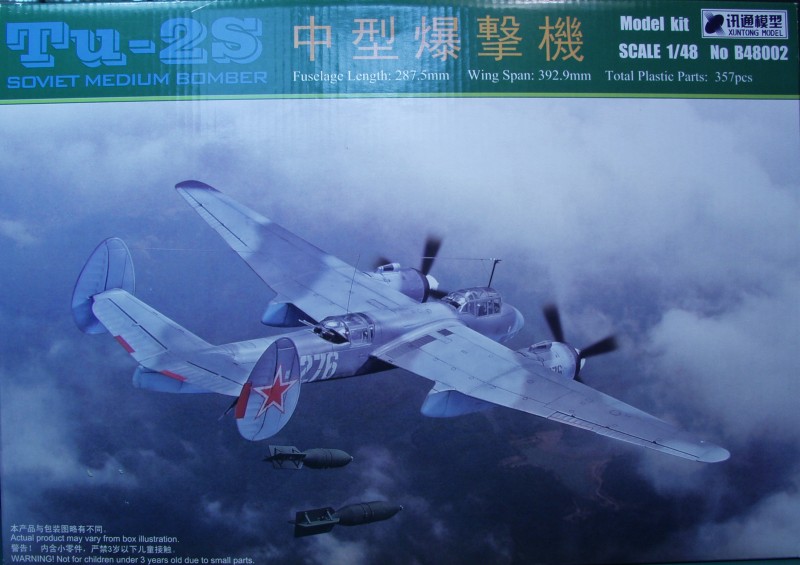
This
is the second
release of the Tu-2 by Xuntong, the first being the post war
variant
the Tu-2T torpedo bomber. This kit is predominantly the same as
the
earlier kit and contains all the parts for the torpedo bomber plus
parts that were different on the bomber version and thus has more
parts
in the box, though some are obliviously not used. My review for
the
Tu-2T can be found here and since I did
a
test fit on that review and the major parts are identical, those
photos
are repeated here.
The Tu-2S comes in a moderately large sturdy corrugated box with attractive artwork on the front. The back of the box has cad 3D renderings of the kit and the two long edges of the box have color side profiles of the eight aircraft that are supplied on the decal sheet. Inside the box are eight sealed cellophane bags. One contains the clear parts, one contains two sprues with the engines, wheels, torpedoes, landing gear struts and various other small parts, one contains the sprue with the engine nacelles, tail plane parts, closed bomb bay doors, ailerons and cockpit floor. One bag with two sprues has the fuselage, wings and tail. One bag has a small sprue with mostly interior detail parts. One bag contain the bombs that were not included with the Tu-2T. and one bag contains two sprues of alternate engine and propeller pats and lastly one bag contains the decals. The box is fairly full and according to the box it contains 357 parts. Sprue shots shown below duplicate sprues are not shown.
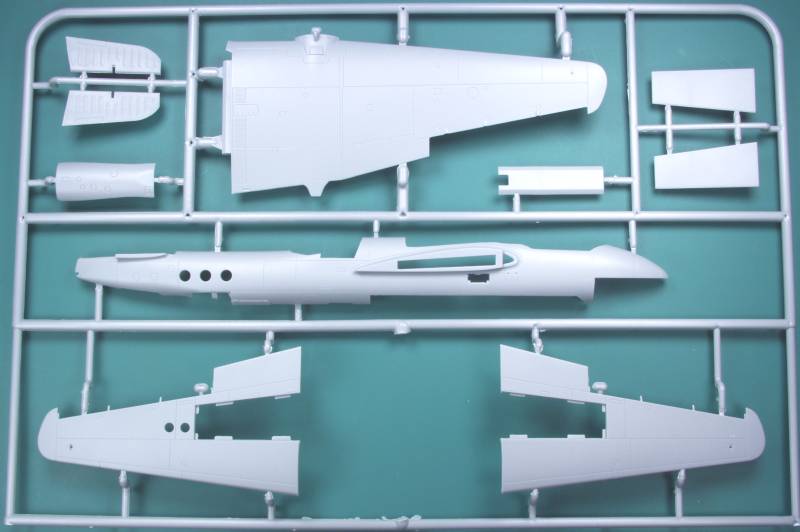
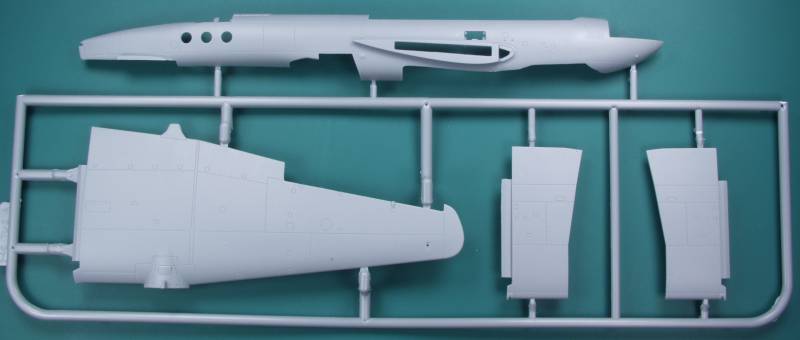
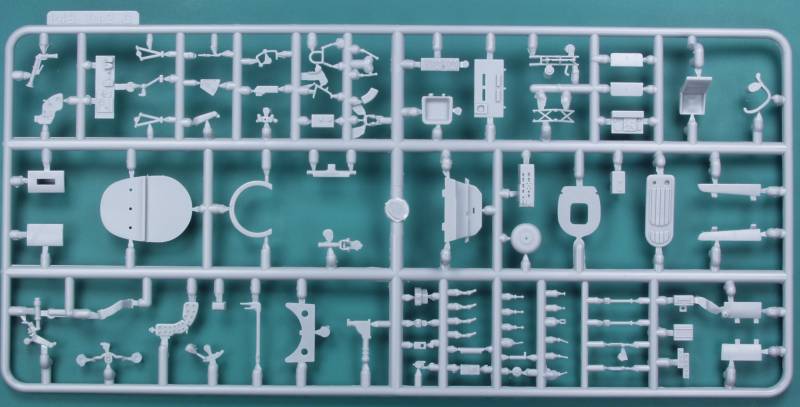
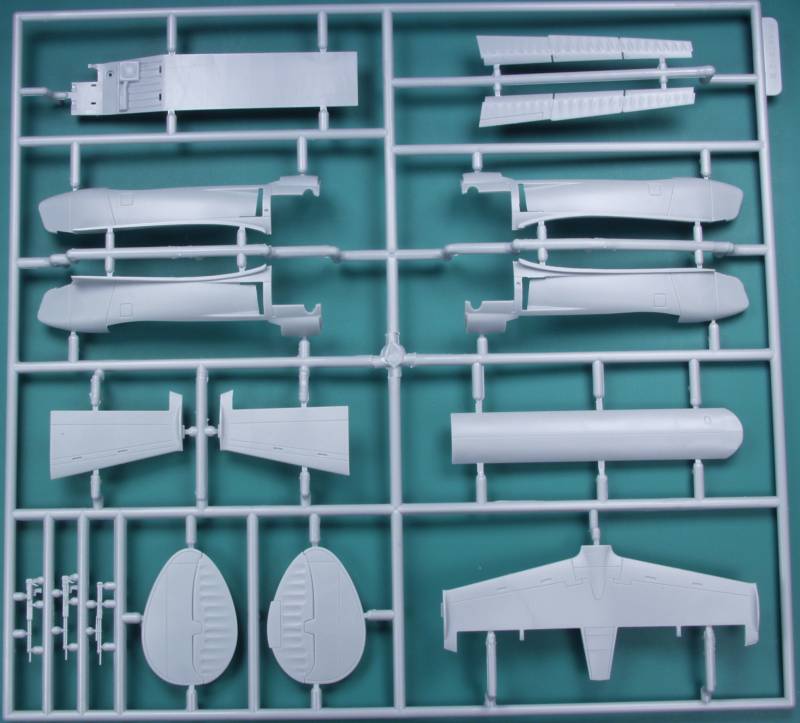
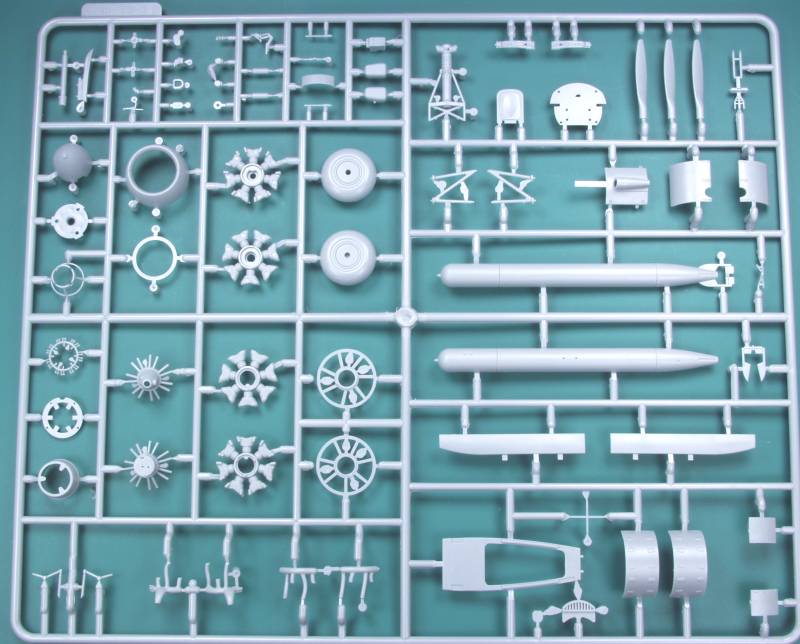
The three new sprues that were not included with the Tu-2T are shown below, there are three with bomb halves (only one shown) one with bomb shackles and sway braces and the third one ( one of two shown) with alternate engine and propeller parts.
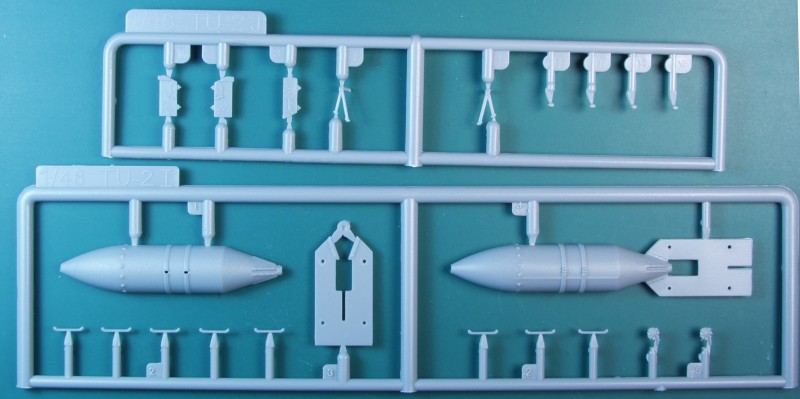
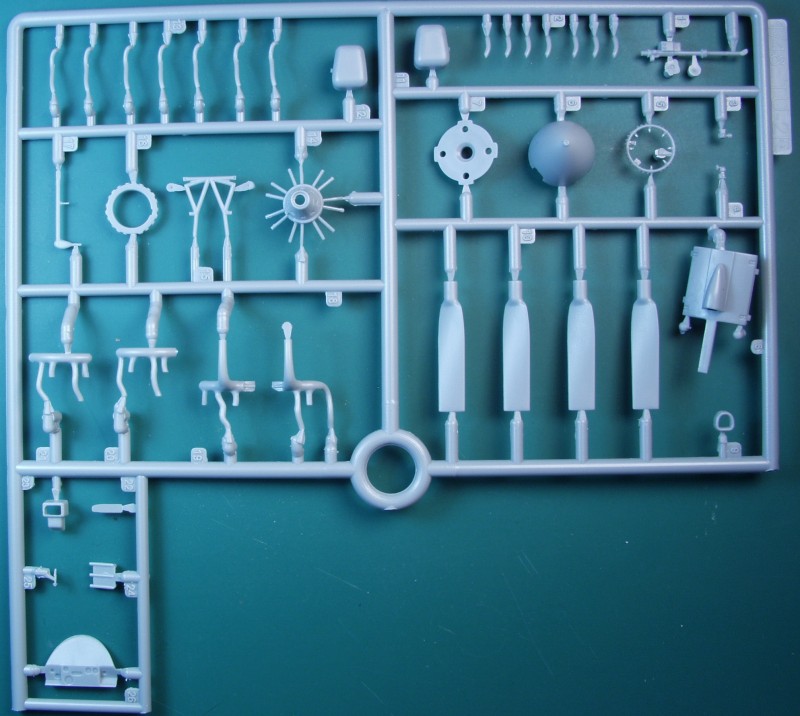
The kit is molded in a medium gray color and the parts have a matte finish. Under magnification there appears to be a texture there as if the molds were abrasive blasted instead of polished but the texture is so fine it should disappear under a coat of paint. The parts are mostly flash free and very crisply molded. I did find a hint of flash on a few parts. The surface detail on the air frame is all recessed. The panel lines are are a bit heavier than some of the newest kits but I didn't find them to be any worst than your run of the mill Tamiya kits. There is some recessed rivet detail on the upper and lower wings but it is very nicely subtle and not the mad riveter effect seen on many Trumpeter kits. I found the fabric effect on the control surfaces to be a bit overdone but that seems to be the norm more often than not. See below.
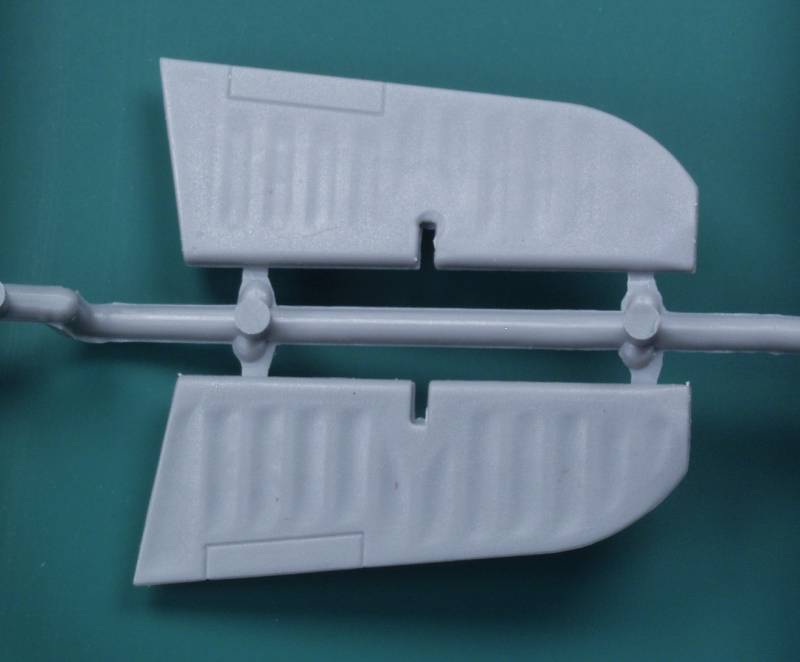
On many of the parts the sprue attachment points are located on the mating surface rather than the edge but not all parts are that way and the attachment points seemed to vary from petite to rather heavy on some parts. The fuselage has quite a bit of interior detail to be installed and it is only spoiled by some ejector pin marks, some are raised others recessed. How many of these will actually show remains to be seen.
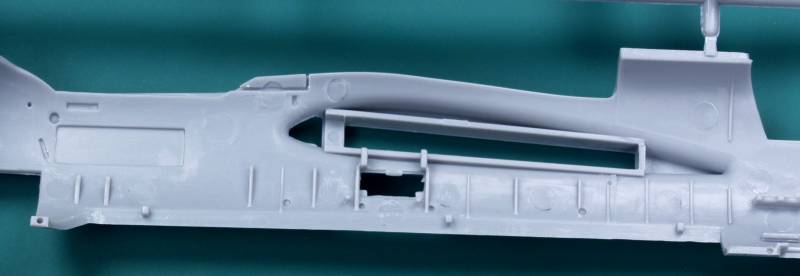
Other ejector pin marks were found on the inside of the engine cowling (not an issue if you don't open them) and the inside of the landing gear doors. There is no PE supplied with the kit but I was amazed at the number of levers that were supplied in plastic. Handling many of them will be as much of a test as PE in some cases.
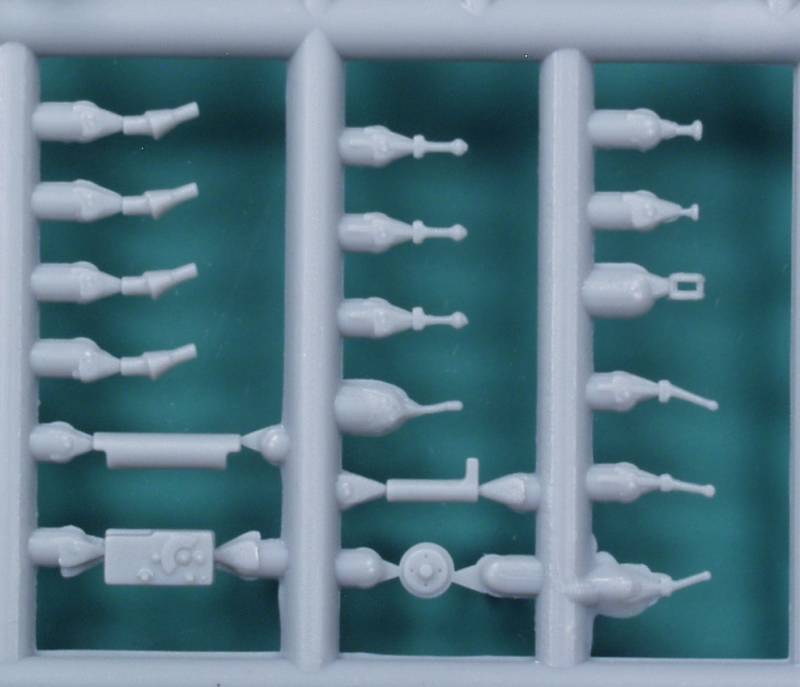
Here are some additional close up photos of the interior parts as well as others.
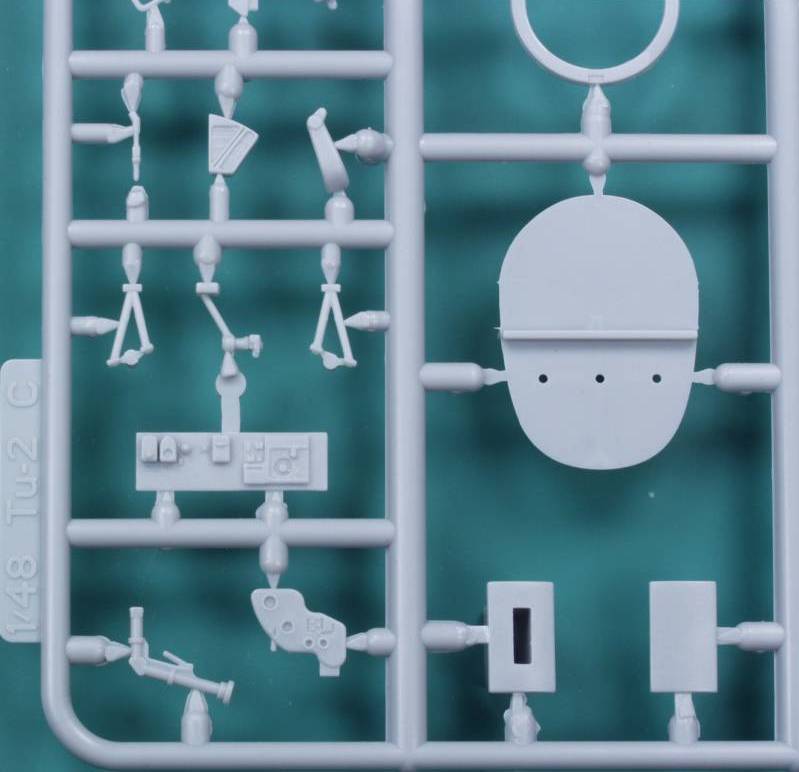
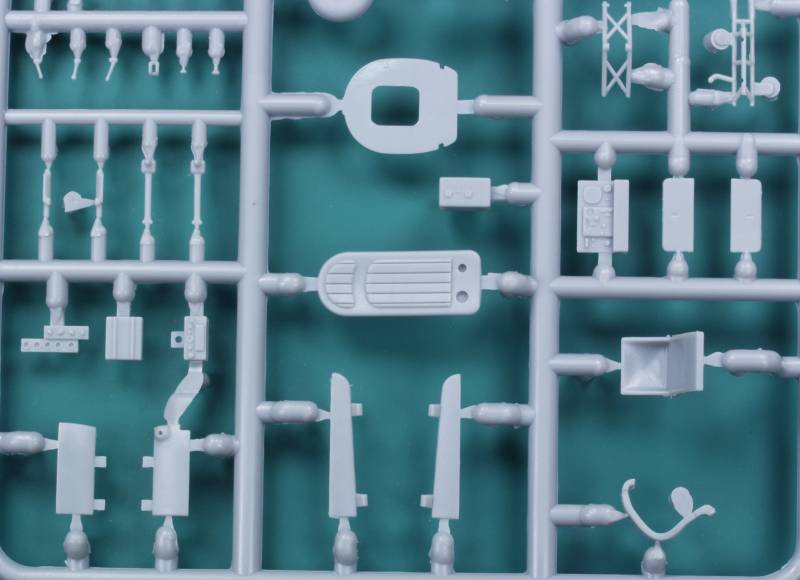
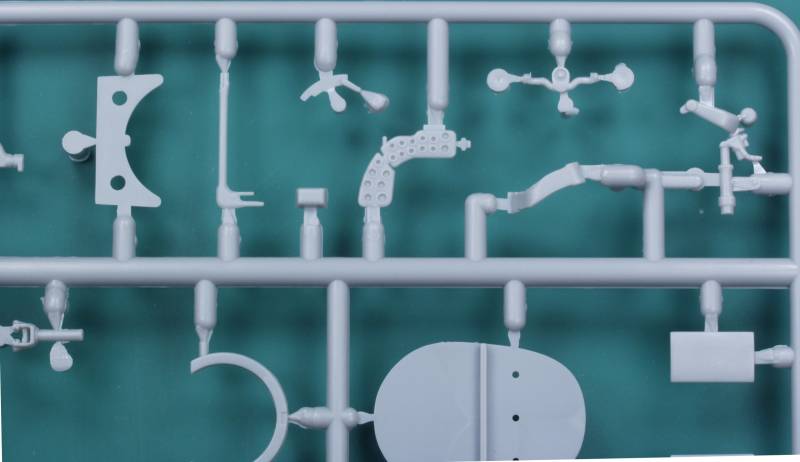
The engines are very nicely detailed with both rows of cylinders, front and rear push rods, a front wiring harness and exhaust manifold parts. Unfortunately unless you open one up it will be lost to view as the cowls are very tight and there is a cooling turbine at the front.
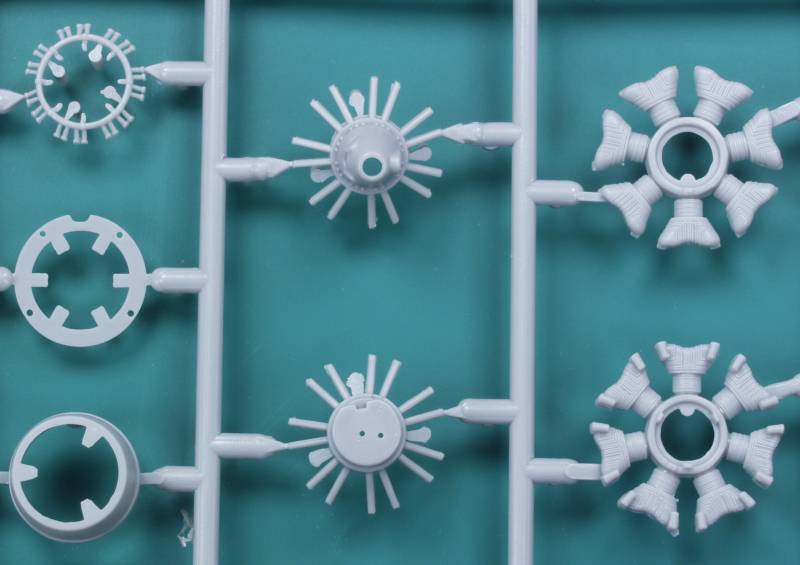
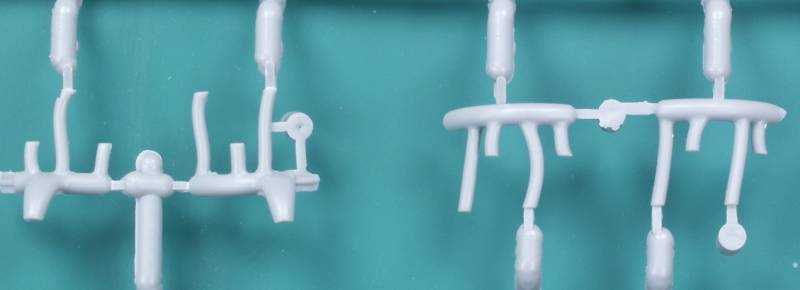
There is a moderate amount of mold parting lines to be cleaned up on some of the small parts.
The clear parts are thin and nicely clear but do have some slight distortion from the molding process. There are two main canopies supplied so other versions are apparently planned. The one called out for this kit version on my kit has a slight bulge on one of the right side windows. I'm not sure if this is supposed to be there or flaw. It doesn't appear to be deep enough to aid the crews vision any but info on this aircraft is not available in abundance. The frame lines are raised and crisp so masking should be relatively easy.
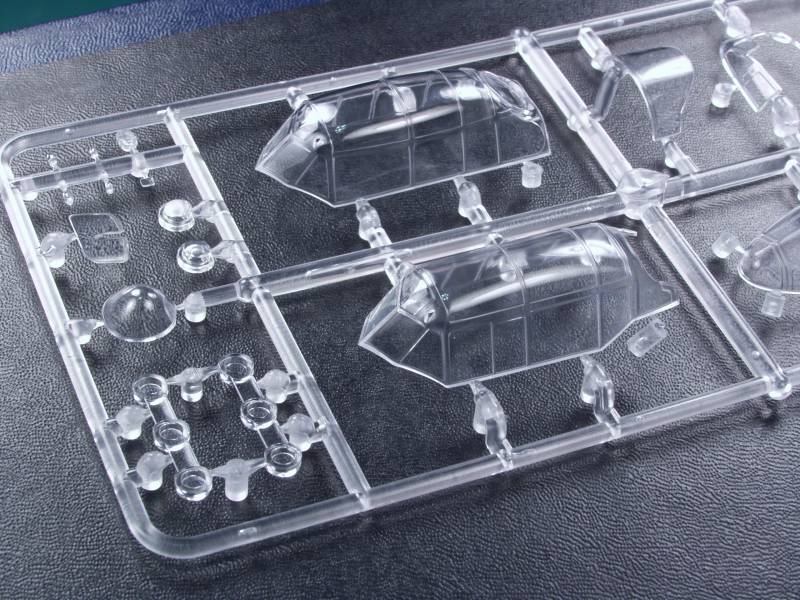

The decals are nicely printed, in register, have a matte finish and appear to be heavily enough printed to be opaque. There is only a minimum of excess film around the decals. They are printed by Xuntong so until I try them they remain an unknown. There are markings for eight aircraft, 1. A Pushkin, Commander 88 BAD, 1945, 2. 113rd Bomber Division 836th Regiment, 1944, 3. Polish Naval Air Force, 1956, 4. Bulgarian Air Force 82nd Bomber Division, 1954, 5. China Air Force, late 50s, 6. Korean People's Air Force, North Korea, 1950s, 7. 326 BAD6th Regiment, 1944, *8. Soviet Union, Caucasian Front, 1947. The decal sheet is shown below.
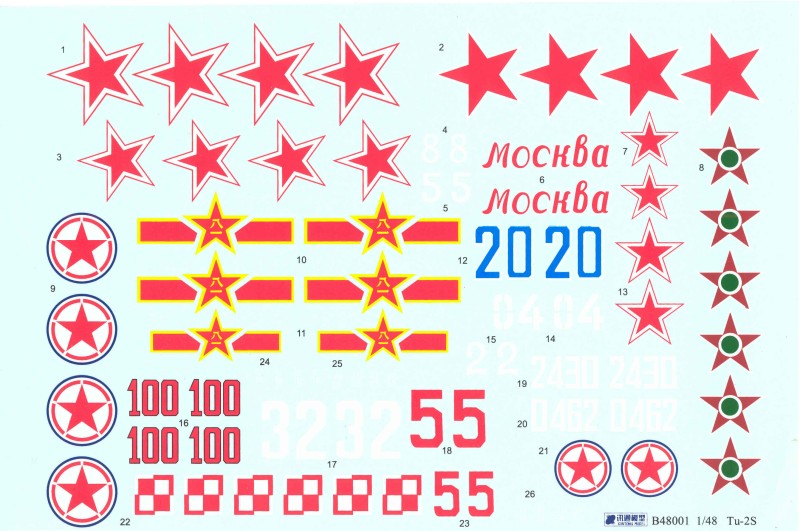
The instructions are a 24 page booklet. The history is in Chinese, English and Russian but the instructions are only Chinese and English. The assembly steps are divided up logically and large enough to see easily and not so much in any one step as to make it confusing. There are a few places where choices need to be made depending on which aircraft you are building and whether you want things open or closed. Color call outs are good with most things covered even down to what color to use on all the pilots levers. A chart on the back page calls out colors by there name in English, Russian and Chinese and there are references to Model Master, Mr. Hobby and Tamiya but there are some colors with no matches. There is a parts map inside the front page and unlike the Tu-2T which had no part numbers on the sprues, this one does which certainly makes life easier.
Accuracy issues; As is usually the case the accuracy troll(s) have already weighed in on this kit and having nothing more than a profile to go on I'm not ready to make a lot of statements in this regard. Points taken so far include the shape of the nose and the upper portion of the canopy. Photographic evidence that I have does make it appear that the top of the canopy should be a bit flatter and there there should be a flatter profile on the nose ahead of the cockpit, which can be seen in photos. I guess if you are concerned that the one in a million Soviet aircraft expert is going to give you grief over these issues, by all means don't build it ! Other than that I'm mostly impressed with the kit. It has a lot of the feel of a Trumpeter kit without all the rivets.
Being a new kit from a new manufacturer I was curious to see how things fit together, at least the major parts and the ones that usually cause the most grief. The first photo shows the wing to fuselage join. I feel that this will be even better when glued as I had difficulty getting the tape to hold as well as it actually fit. Note in all cases I only trimmed away the sprue gates and no other efforts were made to improve the fit.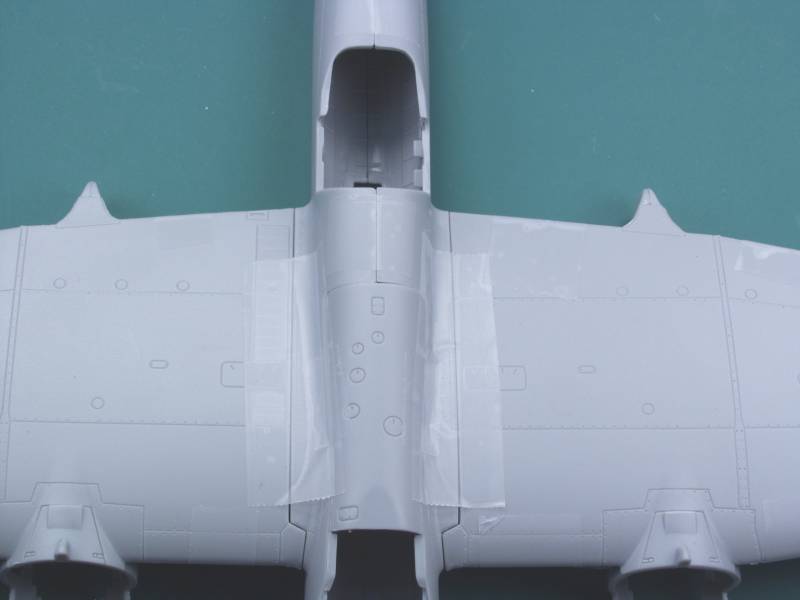
The tape was starting to let go on the next photo but it shows the fit of the upper fuselage fore and aft of the wings.
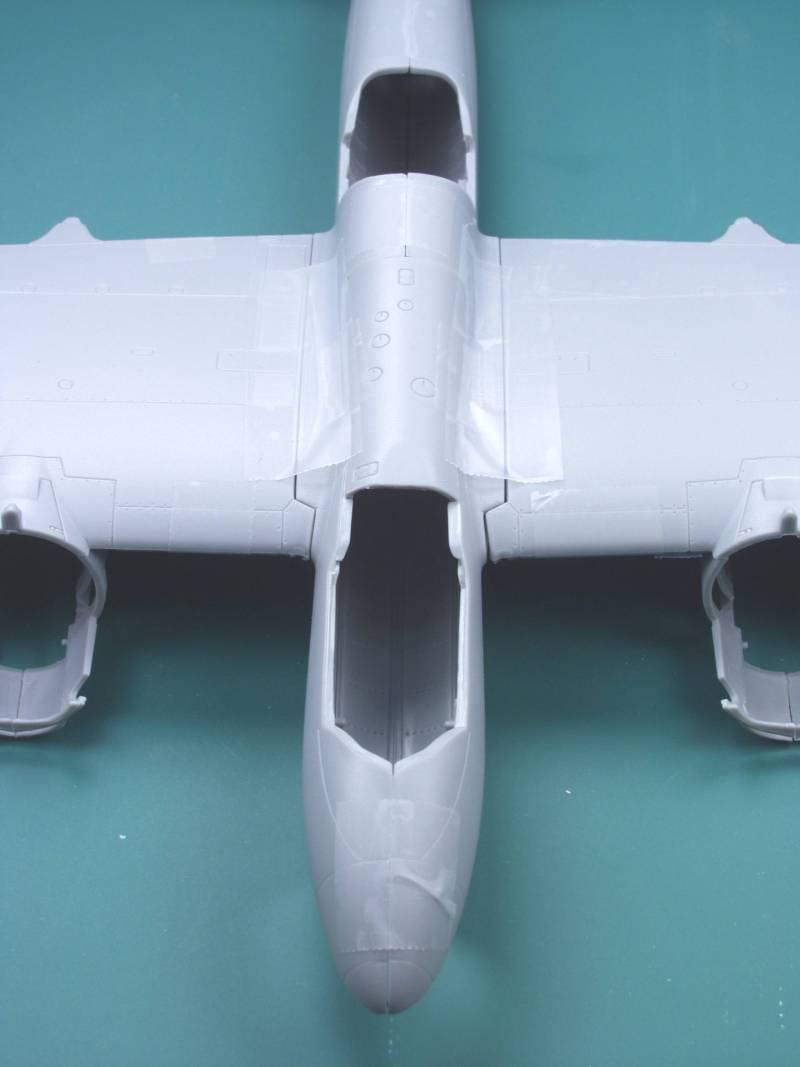
The wings have a nice heavy tab that slots into the fuselage tightly, that was one reason I had trouble getting the tape to hold it snug. Also notice the rather nicely textured wing walk and other wing surface details.
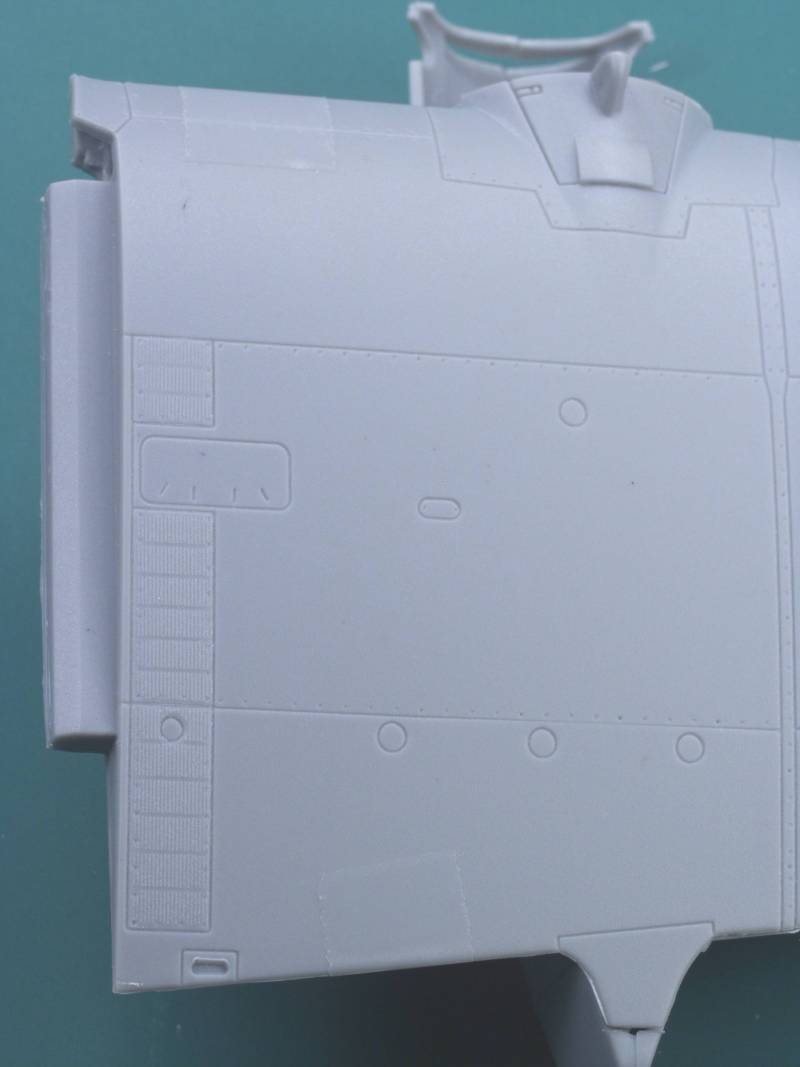
The next photo shows the bottom side wing to fuselage joint as well as the fit of the engine nacelle to the wing and bomb bay to fuselage.
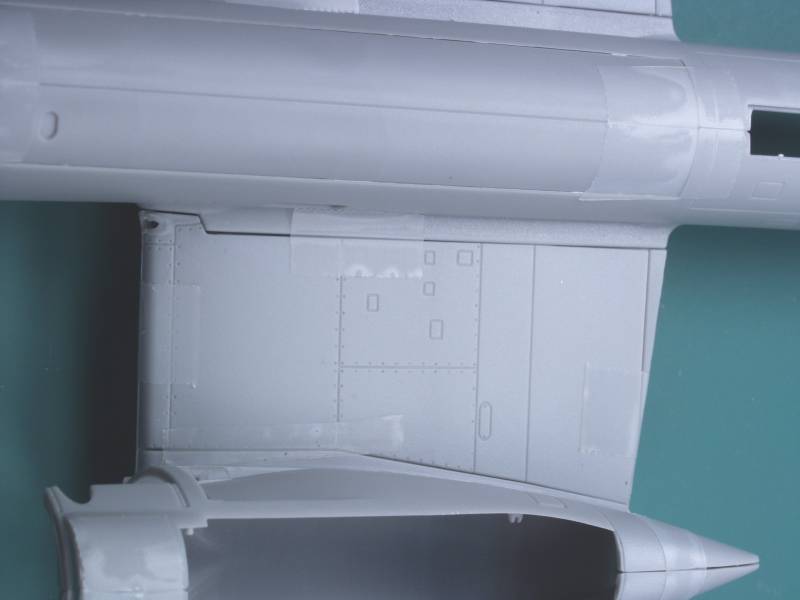
The final photo shows the rear of the fuselage and tail plane join.
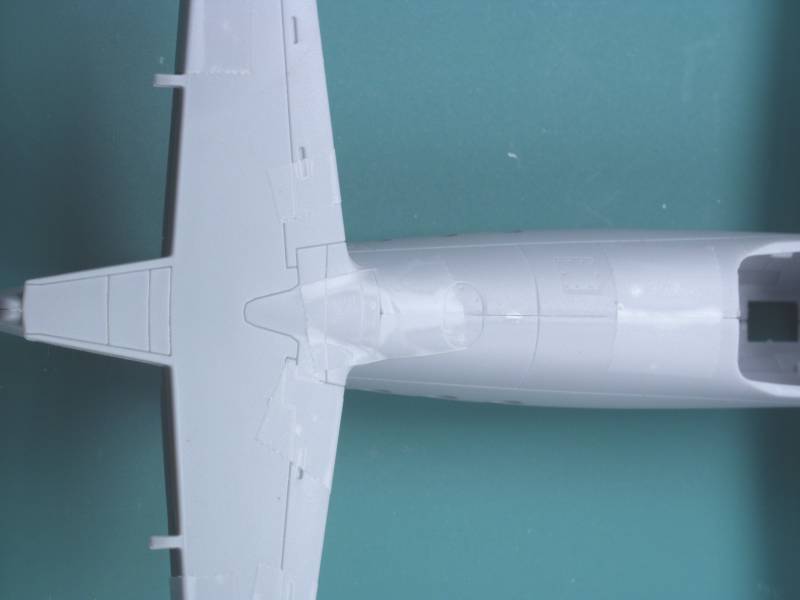
After Market Goodies
Eduard makes a masking set EX384 and a color zoom set FE640 which is shown below. Eduard offers additional sets for the interior, exterior, bomb bay and flaps. Quick Boost does exhaust stacks, two different styles of propellers and replacement side windows, Vector makes a set of replacement control surfaces and SAC makes metal landing gear replacements but I felt that only the color zoom and the mask set were necessary for my purposes.
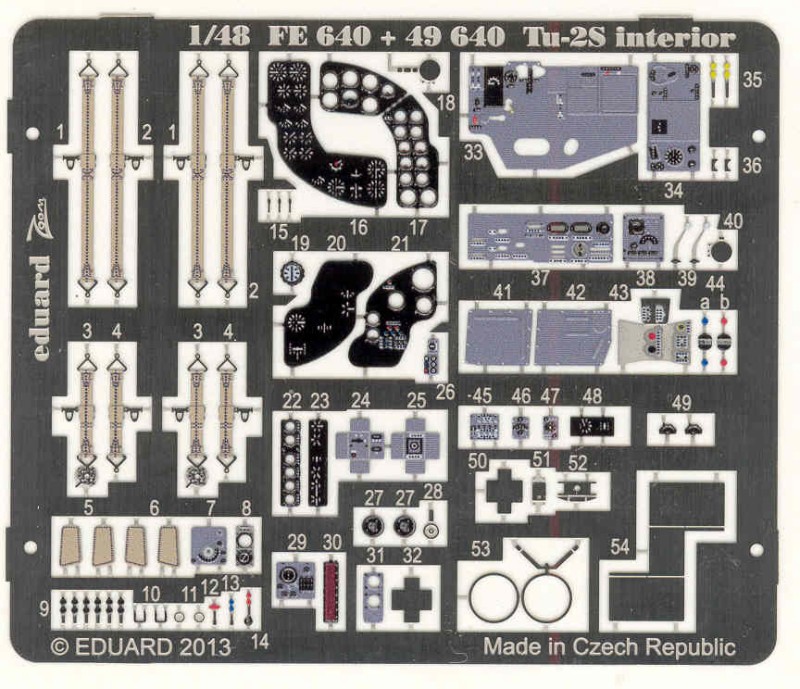
Conclusions
Over all I'm quite impressed with the kit in spite of any accuracy issues and am looking forward to other aircraft that might be forth coming from this manufacturer. They have since released an Il-4 and hope they continue to release some of the lesser known Russian types. Recommended !
Links to kit build or reviews
References
The Osprey Encyclopedia of Russian Aircraft by Bill Gunston
Back to
the Russians
are Coming page.